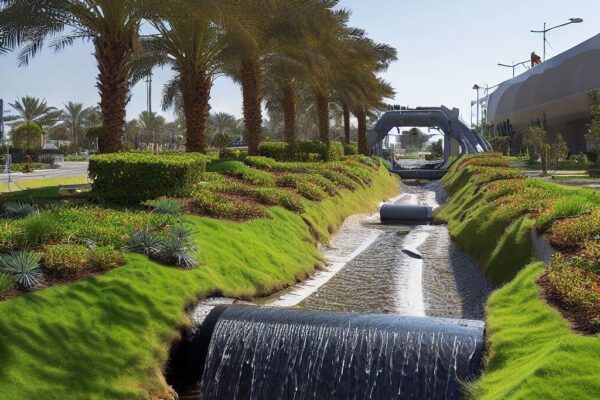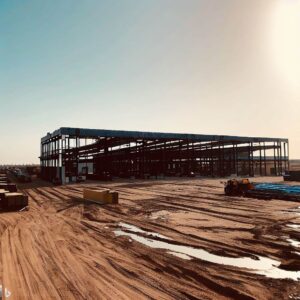Lamerd green space irrigation network design
Project Specifications
Project Introduction
The aim of the Lamerd green space irrigation project was to develop an efficient and sustainable irrigation system; Not only to support the creation but also the maintenance of green spaces in the region.
The design process included a detailed analysis of the specific needs of the green spaces at the western entrance of the Special Economic Zone. We took into account factors such as plant types, soil conditions, water availability, and climate considerations to develop an irrigation network that ensures optimal water distribution and promotes the growth and health of greenery in the area.
The first phase of the design
The first phase of the design included studying the infrastructure. In addition, it included performing hydraulic evaluations and identifying the necessary corrections or additions in the irrigation network. The goal was to create a reliable and efficient water supply system to meet the primary irrigation needs of green spaces.
The second phase of the design
In the second phase, the plan expanded on the basic infrastructure and expanded the irrigation network to 4500 km. This expansion included planning the layout of pipelines. Also determining the optimal location of sprinklers or drip irrigation systems, and incorporating automation and control mechanisms for effective water management.
Water conservation and sustainability considerations were integrated into the design; It also ensured the efficient use of water through the implementation of smart irrigation practices and technologies. The aim of this work was to minimize water losses, reduce environmental impacts, and promote responsible management of water resources.
Conclusion
In conclusion, the design of the first and second phases of the green space irrigation network at the western entrance of the special economic zone of energy industries on Lamard shows the commitment to creating a sustainable and efficient irrigation system. This design ensures optimal water distribution; It also promotes water conservation and helps develop visually appealing green spaces in the area.



